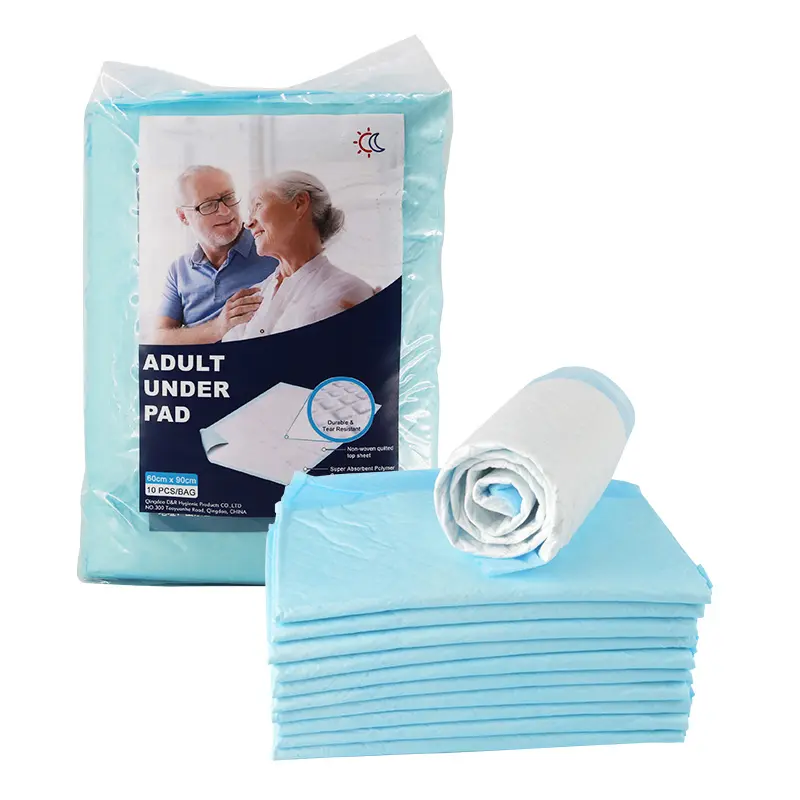Disposable medical underpads, often referred to as “chux pads” or bed protectors, are vital for maintaining hygiene and comfort in medical and caregiving settings. These pads are commonly used to manage incontinence, protect bedding and furniture, and ensure cleanliness in clinical environments. Below, we’ll explore the key features, benefits, and applications of disposable medical underpads.
What Are Disposable Medical Underpads?
Medical underpads are designed to provide a protective barrier against leaks and spills. They consist of several layers:
- Top Layer: A soft, non-irritating surface that wicks moisture away, keeping the skin dry and comfortable.
- Absorbent Core: A high-capacity layer that locks in liquid, preventing leakage.
- Waterproof Backing: A non-slip layer that ensures the pad stays in place while protecting surfaces from moisture.
Key Features of High-Quality Underpads
- Superior Absorbency
Designed to manage large volumes of liquid, underpads can accommodate various levels of incontinence. Some models offer superabsorbent polymers for enhanced performance. - Skin-Friendly Materials
Hypoallergenic and breathable top layers are essential for sensitive skin, minimizing the risk of irritation or pressure sores. - Durability and Reliability
Strong, tear-resistant construction ensures the pad holds up during use without leaking or bunching. - Eco-Friendly Options
Some underpads are manufactured with biodegradable materials, appealing to environmentally conscious users.
Benefits of Disposable Medical Underpads
- Convenience: Single-use design eliminates the need for laundering, saving time and effort.
- Versatility: Suitable for use on beds, chairs, wheelchairs, and exam tables.
- Enhanced Hygiene: Helps prevent the spread of bacteria by creating a sterile barrier.
- Comfort: Keeps the patient or individual dry, reducing the discomfort of incontinence.

Applications of Medical Underpads
- Home Care Settings
Ideal for caregivers managing incontinence, these pads protect bedding and furniture while ensuring patient comfort. - Hospitals and Clinics
Underpads are commonly used in medical environments to maintain sterile conditions during examinations, procedures, or post-operative care. - Travel Use
They provide a portable, mess-free solution for individuals dealing with incontinence while traveling. - Child and Elderly Care
Beyond incontinence, underpads are useful for protecting surfaces during diaper changes or when assisting older adults with limited mobility.
Choosing the Right Medical Underpad
To select the best underpad, consider the following factors:
- Absorbency Level: Match the pad’s capacity to the user’s needs.
- Size: Options range from compact pads for wheelchairs to extra-large ones for beds.
- Additional Features: Look for adhesive strips, odor control technology, or biodegradable materials.
Keywords for Medical Underpad Searches
To find the right products, consider searching for:
- “Waterproof absorbent disposable underpads“
- “Eco-friendly hospital bed protectors”
- “Large incontinence care underpads”
- “Hypoallergenic medical chux pads”
- “High-capacity disposable mattress protectors”
Conclusion
Disposable medical underpads are a game-changer in caregiving and medical environments, offering protection, comfort, and hygiene. Whether you’re a caregiver at home or a healthcare professional, these pads provide a practical solution for managing incontinence and maintaining a clean, stress-free environment. Investing in high-quality underpads ensures both users and caregivers can enjoy peace of mind.
